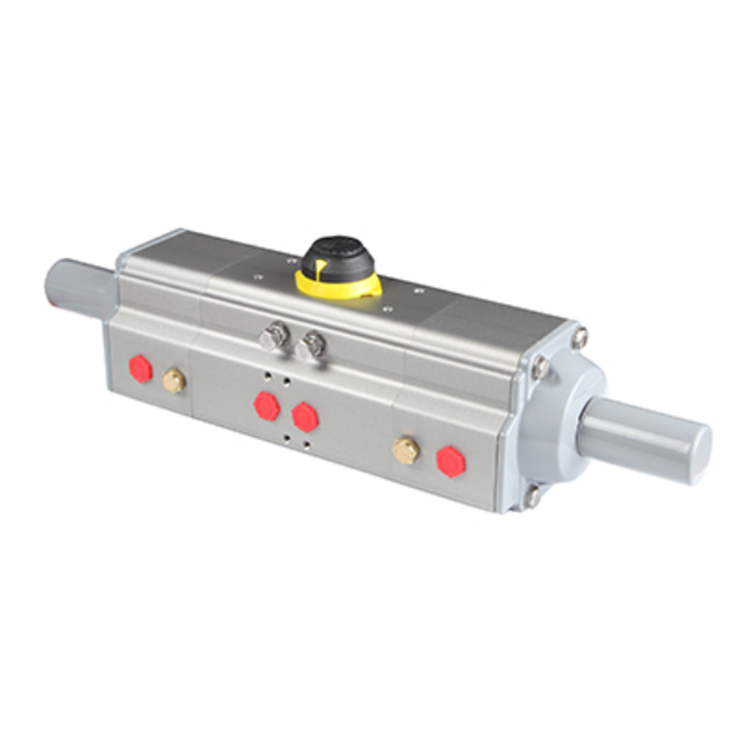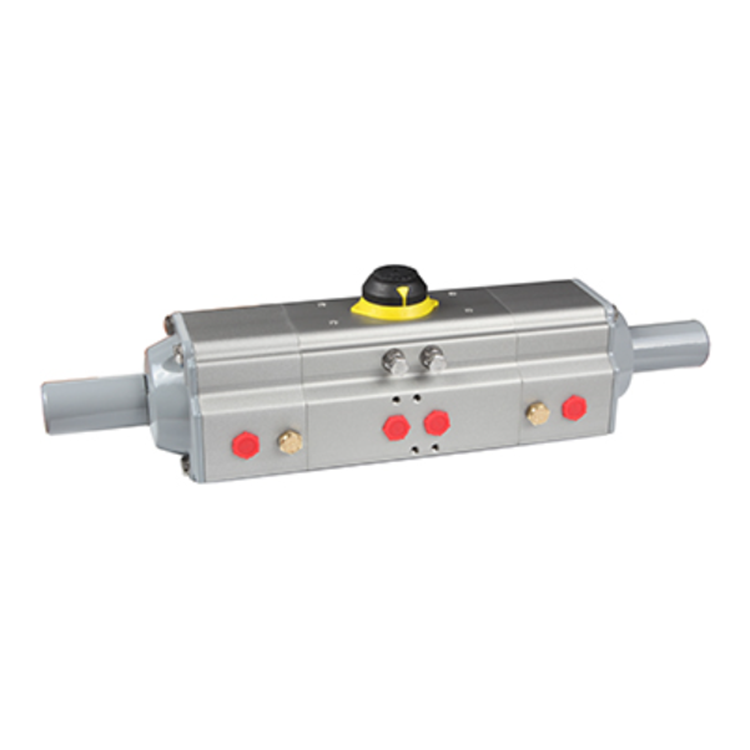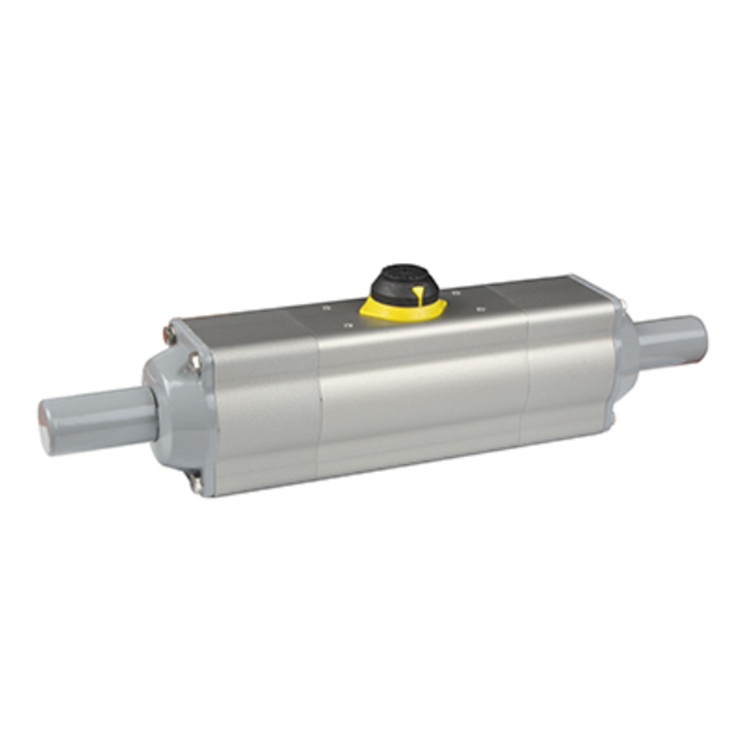3 Position Pneumatic Actuator
1.Flexibility: 3-Position Pneumatic Actuators can control a device in three different positions, increasing the system's control flexibility.
2.Precision: They can precisely control the movement of a device between three preset positions, providing high accuracy.
3.Reliability: These actuators are typically very durable and can operate for extended periods in harsh industrial environments.

3 Position Pneumatic Actuator Gallery

3-Position Pneumatic Actuator

3-Position Pneumatic Actuator

3-Position Pneumatic Actuator
Every LORZEN 3 Position Pneumatic Actuator has gone through highly controlled conditions to ensure the high quality of your Pneumatic Actuators.
The advantages of a 3-Position Pneumatic Actuator include:
Flexibility: 3-Position Pneumatic Actuators can control a device in three different positions, increasing the system’s control flexibility.
Precision: They can precisely control the movement of a device between three preset positions, providing high accuracy.
Reliability: These actuators are typically very durable and can operate for extended periods in harsh industrial environments.
Safety: Because they use air pressure instead of electricity as a power source, they are particularly safe in wet, flammable, or explosive environments.
Economy: 3-Position Pneumatic Actuators are often more economical than electric or hydraulic actuators because they have lower operating and maintenance costs.
Environmentally Friendly: They use compressed air as a power source, which has a minimal environmental impact.
Quick Response: The response speed of pneumatic actuators is usually very fast, making them suitable for applications that require quick reactions.
Easy Maintenance: Due to their simple design, the maintenance and repair of these actuators are typically relatively easy.
Product characteristics:
The product features of a 3-Position Pneumatic Actuator include its ability to control a device in three different positions, which is its most distinctive feature. In addition, they can provide precise position control to meet stringent process requirements. These devices are typically very durable and can operate under harsh environments and high load conditions. They use air pressure as a power source, making them safer in wet, flammable, or explosive environments. 3-Position Pneumatic Actuators use compressed air as a power source, eliminating the need for electricity or hydraulic oil.
Performance characteristics:
The performance characteristics of a 3-Position Pneumatic Actuator are multi-faceted and include the following:
Multi-Position Control: The most distinctive feature of a 3-Position Pneumatic Actuator is its ability to control a device in three different positions. This allows for more complex control schemes and improves the versatility of the device it controls.
Precision: These actuators can provide precise position control, allowing them to meet stringent process requirements. This makes them suitable for applications where accuracy and repeatability are crucial.
Durability: 3-Position Pneumatic Actuators are typically very durable, capable of operating under harsh environments and high load conditions. Their robust design ensures long service life and reliable performance.
Safety: By using air pressure as a power source, these actuators offer a safer alternative in wet, flammable, or explosive environments compared to electric or hydraulic actuators.
Energy Efficiency: As they use compressed air as a power source, these actuators eliminate the need for electricity or hydraulic oil, reducing energy consumption and environmental impact.
Fast Response: Pneumatic actuators generally have a quick response time, making them suitable for applications that require rapid action.
Ease of Installation and Maintenance: Their simple design makes installation and maintenance relatively easy. They can be integrated with various control systems (such as PLCs) and mechanical devices (like valves, dampers, etc.).
Customizability: Many manufacturers offer customization services to meet the specific needs of different applications. This ensures that the actuator can be tailored to the exact requirements of the task at hand.
Operating Parameters:
Three position pneumatic actuator has two kinds of models 0°-45°-90°and0°-90°-180°,the air intake “2” after the intake ends of the piston movement was designed to both ends there are auxiliary pistons produce mechanical constraints to achieve a middle position, can be used directly out of both ends of the adjusting screw is easy to adjust the middle point of view, such as 20 °,30°,50°,75°and 95°,120°.130°.150°,175 °and so on.
Performance Testing
Our state-of-the-art facilities allow rigorous testing to validate function, endurance and environmental protection.
Quality Assurance
100% testing and inspection ensures superior performance of every actuator.
LORZEN Pneumatic Actuators Are Utilized Across Various Sectors, Including:
Actuator Design
3 Position Pneumatic Actuator Search
Pneumatic control system is an important part of any valve and actuator. has rich experience in gas circuit control to meet clients’requirements for on-off, regulating and urgent switching-off. Gas circuit system can be installed on a panel or in control cabinet, or in-stalled on an actuator or placed separately.
- +8613736966003
- sales@lorzval.com
- Lorzen Factory Park, Linyang Industrial District, Oubei Town, Yongjia County, Wenzhou City, Zhejiang Province, China
3 Position Pneumatic Actuator Related Information
Installation and Maintenance
Installation and Maintenance
The installation and maintenance of a Fork Pneumatic Actuator are relatively straightforward. Here are some basic steps:
Installation: During the installation process, it’s important to ensure the actuator is correctly aligned and secured in the right position. The actuator should be properly interfaced with the driven device (such as a valve or other mechanical component) to ensure accurate and efficient operation.
Maintenance: Maintenance of the actuator typically involves regular inspections and replacement of worn parts. This might include replacing seals, cleaning and lubricating moving parts, and checking and adjusting the control system. In most cases, just carrying out these maintenance steps periodically can ensure long-term reliable operation of the actuator.
Industry Applications/Functional Uses
Industry Applications/Functional Uses
Fork Pneumatic Actuators have a wide range of uses in many different industries and applications. Here are some of the main application areas:
Manufacturing: On automated production lines, these actuators can be used to control a variety of mechanical equipment such as valves, drums, conveyors, etc.
Energy Sector: In the oil, gas, and electricity industries, these actuators can be used to control various types of valves, ensuring efficient distribution and use of energy.
Chemical Industry: In chemical processes, these actuators can be used to precisely control conditions for various chemical reactions, such as temperature, pressure, and flow rate.
Water Treatment: In water treatment facilities, these actuators can be used to control various equipment like pumps, valves, and filters, ensuring effective water treatment.
Food and Beverage Industry: In the production process of food and beverages, these actuators can be used to control various equipment like mixers, ovens, and packaging machines, ensuring efficiency and quality in the production process.
These are just some of the main application areas for Single Acting Fork Pneumatic Actuators. Thanks to their simple design and operating principle, these actuators can adapt to a variety of different applications and environments.

